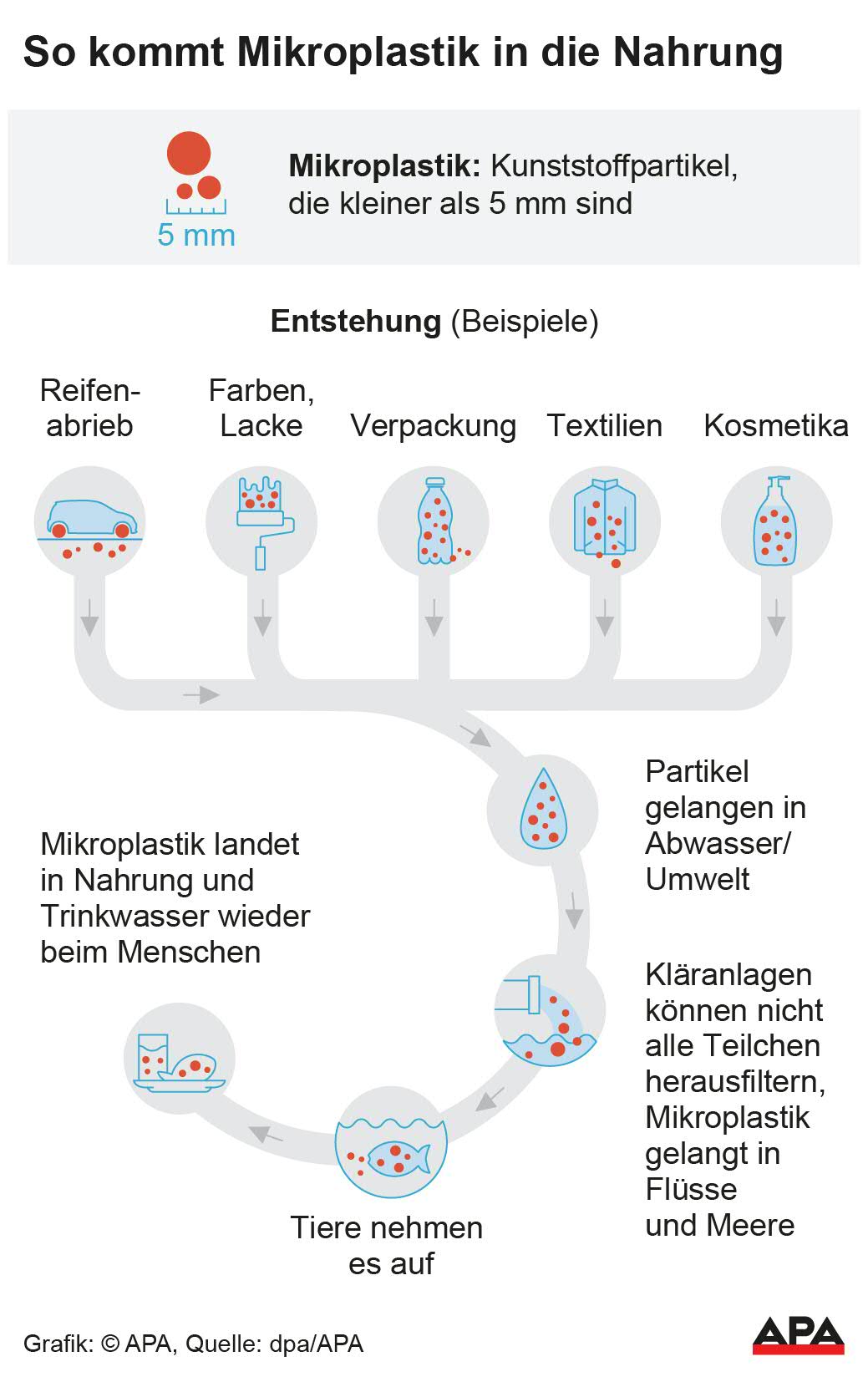Everywhere Microplastics - But What Does It Do to Our Health?

Whether it's air, water, or food: microplastic is now seemingly everywhere and could harm both humans and the environment. The small particles are already detectable in human tissue, organs, and the brain. However, the current state of research on health impacts is sparse, experts explained on the occasion of the start of new negotiations on a UN agreement to reduce plastic waste, according to the APA.
Effects of Microplastic on Health Still Underresearched
Even though there are now indications from cell culture and animal experiments that plastic particles could promote inflammation, immune disorders, and cancer, no clear cause-and-effect relationship can be proven. "A causal relationship cannot currently be established," said Lukas Kenner from the Medical University (MedUni) of Vienna.
Microplastic, which mainly arises from aging processes, weathering, mechanical abrasion, or washing synthetic textiles, can be absorbed by humans through food, air, and partly through the skin. What happens then is largely unclear. Whether everyone actually consumes up to five grams of these mini-particles each week - illustratively the weight of a credit card - as has been claimed for years, is controversial. Since, for example, water, seafood, and even salt contain relatively high amounts of microplastic, one is exposed to the particles daily.

There is a lot of evidence of effects, "but no really urgently alarming, causal connections that one can say microplastic causes this or that disease," says Helene Walch from the Environment Agency in conversation with the APA. The effects of microplastic are still underresearched. There is a need for further research, also because the particles contain many chemicals.
Particles Surround Themselves with Various Substances
Additionally, pollutants already present in the environment can accumulate on the surfaces of microplastic particles, and partially pathogenic germs can grow on them, which may then enter organisms with the particles. Ultimately, there is "definitely enough basis to say that microplastic is a potential risk," explains the environmental scientist.
There is also evidence that the amount of plastic particles in the human body is increasing. A research team recently found significantly more tiny plastic particles in liver and brain samples of deceased individuals from the year 2024 than in samples from the year 2016. Studies would show, in any case, that "we do not have a small amount of plastic in our blood. And as a result, it can go everywhere," said Kenner, "even into the brain, because it can cover itself with molecules, such as cholesterol molecules, which allow it to cross the blood-brain barrier."
Main Sources of Microplastics
There are only estimates and projections for the main source of microplastics. Tire wear is partly cited as the most important source, which, according to local researchers, can also influence ice formation in clouds and thus the climate. According to figures collected on behalf of the EU Commission, paints, varnishes, and coatings are now in first place. The abrasion of textiles, packaging, and the loss of plastic pellets are also considered massive pollutants.
There seems to be a supply: "A doubling in ten years and a tripling of plastic production by 2050 is expected. There is no stopping it so far," said environmental geoscientist Thilo Hofmann from the University of Vienna to the APA. Already, according to a study from Berkeley, this area is responsible for about 3.5 percent of global greenhouse gas emissions - with a clear upward trend.
Negotiations on Plastic Agreement
The negotiations on a UN plastic agreement starting on Tuesday in Geneva will certainly have an impact on the issue of microplastics. Kenner, who is on-site as a delegate of the "Scientists' Coalition for an Effective Plastics Treaty" network, considers a breakthrough unlikely. Hofmann is also skeptical, not expecting an agreement on binding maximum quantities and a declaration of the chemicals used. "In any case, it would be very important and urgently necessary to commit to measures at the global level as well," explained Walch.
After no agreement on such an agreement could be reached at the fifth round of negotiations for a UN plastic agreement in South Korea at the end of 2024, a new attempt is now starting in the Swiss city of Geneva. By August 14, representatives from over 170 countries should primarily agree on a cap for plastic production. However, the talks failed last year, as some nations only wanted a more efficient waste management solution. The plan was actually to reach a joint decision to curb plastic by the end of 2024.
(APA/Red)
This article has been automatically translated, read the original article here.





